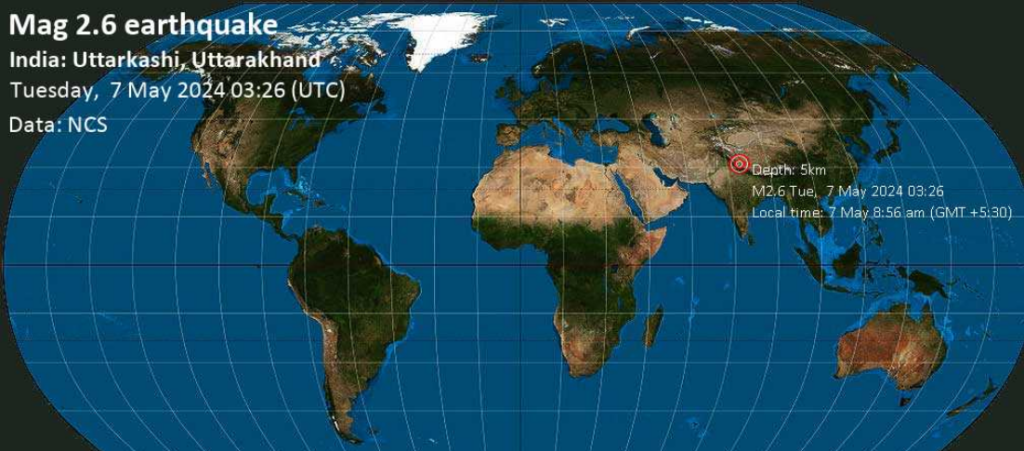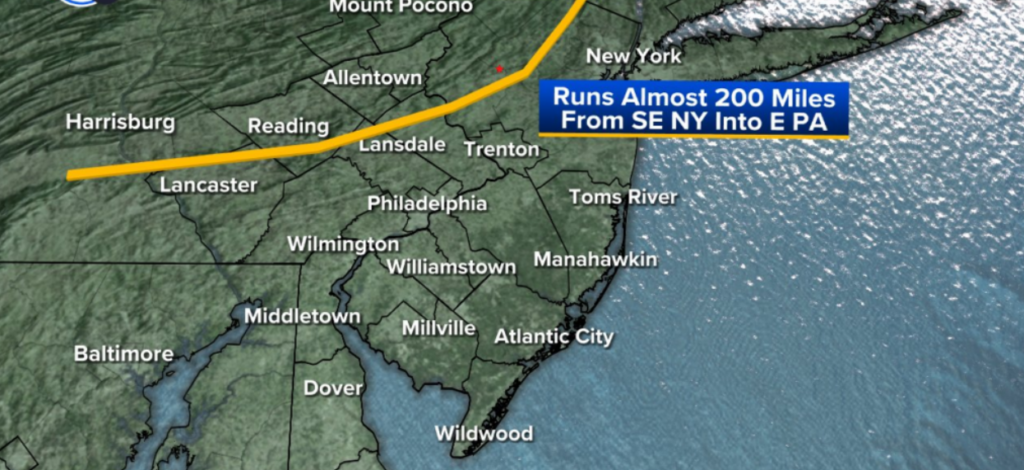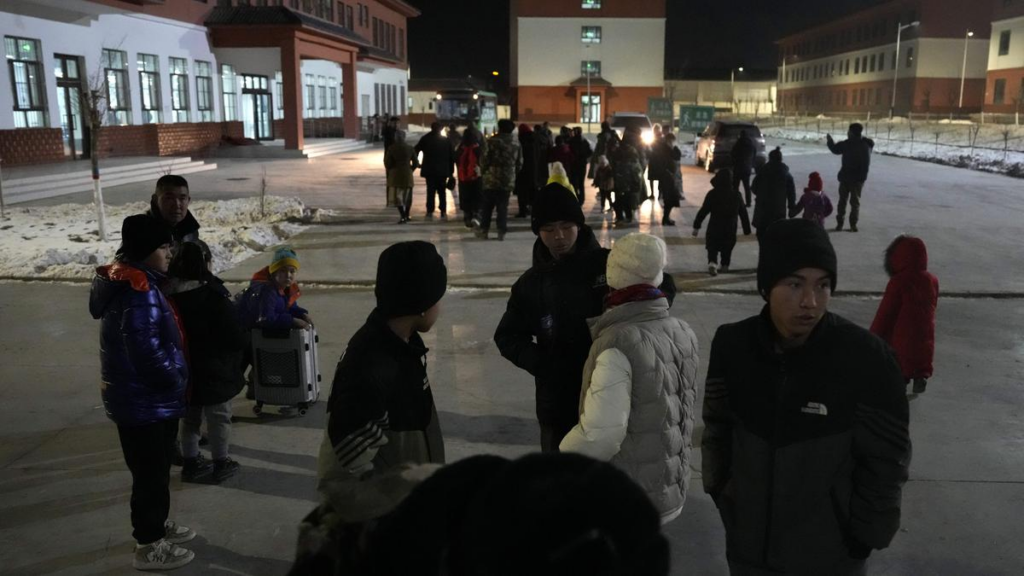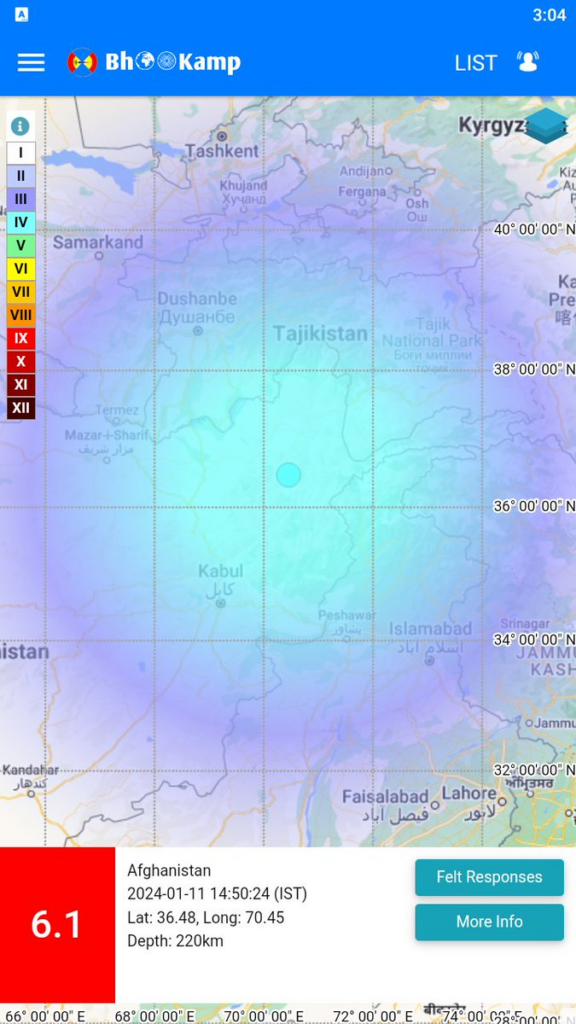An earthquake of 2.6 magnitude on the Richter scale hit Uttarakhand’s Uttarkashi on Tuesday.
The National Centre for Seismology (NCS) reports that Uttarakhand’s Uttarkashi had an earthquake on Tuesday that had a value of 2.6 on the Richter scale. The epicenter was five kilometers deep and was at latitude 31.0 and longitude 79.31.
The NCS posted on X (previously Twitter) with the following information: “EQ of M: 2.6, On 07/05/2024 08:56:40 IST, Lat: 31.00 N, Long: 79.31 E, Depth: 5 Km, Location: Uttarkashi, Uttarakhand.”
On May 1, Kishtwar in Jammu and Kashmir was struck by an earthquake with a magnitude of 3.4 on the intervening Tuesday and Wednesday nights. The earthquake happened thirty kilometers below the surface.

Also Read: The Third Space Mission of Sunita Williams was Canceled.
EARTHQUAKE DETAILS
| Date & Time (UTC) | May 7, 2024 03:26:40 UTC – 1 hour 47 minutes ago |
| Local Time at Epicenter | May 7, 2024, 03:26:40 UTC – 1 hour 47 minutes ago |
| Status | Confirmed |
| Magnitude | 2.6 |
| Depth | 5 km |
| Epicenter | 31°N / 79.31°E Chamoli, Uttarakhand, India |
| Proximity | Also near China, 11.9 km (7 mi) away |
| Seismic Antipode | 31°S / 100.69°W |
| Shaking Intensity | Broken Clouds, -9.4°C (15°F), humidity: 81%, wind: 2 m/s (4 km) from WSW |
| Felt | 0 reports |
| Primary Data Source | NCS (National Center for Seismology) |
| Weather at Epicenter | Broken Clouds, -9.4°C (15°F), humidity: 81%, wind: 2 m/s (4 kts) from WSW |
| Estimated Seismic Energy | 5 x 10^8 joules (139 kilowatt hours, equivalent to 0.12 tons of TNT) |
Recently, on March 5, two earthquakes with magnitudes of 2.5 and 1.8 struck Uttarkashi.
An earthquake of a magnitude of 3.1 struck the Uttarkashi district on December 28 of last year. Two earthquakes measuring 2.7 and 3.1 were recorded in July of last year in the same district.
An earthquake with a magnitude of 4.1 was recorded in Uttarkashi on April 3 of last year. Three-magnitude earthquakes were detected in the Pithoragarh district that same day. On February 17, an earthquake of a magnitude of 3.3 struck the Chimoli district. Uttarkashi was struck by an earthquake with a magnitude of 4.1 earlier on February 12. A 4.1-magnitude earthquake struck the Uttarkashi district on February 6.












